#collector fossil reptile bones
Explore tagged Tumblr posts
Photo

Double Plesiosaur Vertebrae Fossil, Oxford Clay, Jurassic Stewartby UK | Articulated Marine Reptile + COA
Double Plesiosaur Vertebrae – Oxford Clay Formation, Callovian Stage, Middle Jurassic, Stewartby, Northamptonshire, United Kingdom
This impressive fossil consists of two Plesiosaur vertebrae originally found articulated and separated during professional preparation. These vertebrae come from the Oxford Clay Formation, dating to the Callovian stage of the Middle Jurassic, approximately 165 to 160 million years ago, and were discovered near Stewartby, Northamptonshire—an area historically significant for vertebrate fossil finds.
Fossil Type & Species:
Type: Vertebrate Fossil (Plesiosaur Vertebrae – originally articulated)
Clade: Sauropterygia
Order: Plesiosauria
Superfamily: Plesiosauroidea or Pliosauroidea (specific assignment undetermined)
Common Name: Plesiosaur (Marine Reptile)
Described by: Many species described from Oxford Clay, including Cryptoclidus, Muraenosaurus, and Peloneustes by early palaeontologists like Seeley and Owen
Geological & Stratigraphic Details:
Location: Stewartby, Bedfordshire–Northamptonshire region, UK
Formation: Oxford Clay Formation
Geological Stage: Callovian (Middle Jurassic)
Age: ~165–160 million years ago
Biozone: Peltoceras athleta ammonite zone (regionally correlated)
Depositional Environment: Shallow marine basin with low-oxygen bottom waters, ideal for the preservation of vertebrate remains in finely laminated marine mudstones
Morphology & Features: These two vertebrae exhibit classic plesiosaurian traits:
Cylindrical centra with concave articular surfaces (amphicoelous)
Flat dorsal and ventral surfaces typical of marine-adapted vertebrates
Distinctive surface texture and bone grain, with no artificial reconstruction
Separated from one another during cleaning but originally discovered as an articulated pair
Natural coloration in earthy browns and greys from mineral-rich clay matrix
Notable: Plesiosaurs were among the dominant marine predators of the Jurassic seas. Their fossils are relatively scarce compared to ammonites and invertebrates, making vertebral specimens highly desirable. Double vertebrae finds—especially originally articulated—are rarer still and represent a more complete snapshot of the animal’s skeletal structure.
Specimen Details:
Origin: Stewartby, Northamptonshire, UK
Fossil Type: Double Plesiosaur Vertebrae (Marine Reptile)
Geological Stage: Callovian, Middle Jurassic
Formation: Oxford Clay
Preservation: Originally articulated; now cleaned and separated but displayed together
Size Reference: Scale cube = 1cm (see photos for full sizing)
Note: The exact specimen shown in the photo is the one you will receive
Authenticity & Quality: This fossil is 100% genuine and has not been restored or artificially altered. It comes with a Certificate of Authenticity and was professionally cleaned to preserve anatomical detail.
Why Choose This Fossil? Perfect for:
Serious fossil collectors and palaeontology enthusiasts
Museum-quality marine reptile displays
Educational exhibits on Jurassic marine ecosystems
Rare vertebrate fossil investment
Shipping & Packaging: We ship using eco-conscious materials and track all deliveries. Each fossil is packed securely and handled with care.
Secure a rare piece of Jurassic marine history with these authentic Plesiosaur vertebrae from the Oxford Clay of Stewartby.
All of our Fossils are 100% Genuine Specimens & come with a Certificate of Authenticity.
#Plesiosaur vertebrae fossil#Jurassic marine reptile bones#Oxford Clay plesiosaur#Stewartby fossil reptile#double vertebrae fossil#real plesiosaur bone UK#fossil with COA#marine reptile vertebrae#Jurassic Northamptonshire fossil#articulated plesiosaur vertebrae#Oxford Clay fossil vertebra#UK plesiosaur specimen#Jurassic vertebrate fossil#collector fossil reptile bones
0 notes
Text
A massive jawbone found by a father-daughter fossil-collecting duo on a beach in Somerset along the English coast belonged to a newfound species that’s likely the largest known marine reptile to swim in Earth’s oceans.
Scientists consider the blue whale, which grows up to 110 feet (33.5 meters) long, to be the largest known animal ever to exist on the planet. But it’s possible that the 202 million-year-old reptile, known as an ichthyosaur or “fish lizard,” may have rivaled it in size.
The ichthyosaur’s jawbone, or surangular, was a long, curved bone at the top of the lower jaw just behind the teeth, and it measured more than 6.5 feet (2 meters) long. Researchers believe the creature, named Ichthyotitan severnensis, or “giant fish lizard of the Severn” in Latin, was more than 82 feet (25 meters) long, or the length of two city buses.
Justin and Ruby Reynolds, who live in Braunton, England, recovered the first pieces of the jawbone in May 2020 as they looked for fossils on the beach at Blue Anchor, Somerset. Ruby, 11 at the time, spotted the first chunk of bone, and then she and her dad found additional pieces together.
4 notes
·
View notes
Text
What Makes Tyrannosaur Teeth For Sale A Valuable Collectible?
Dinosaur fossil collections have always fascinated collectors, scientists, and enthusiasts. Among the innumerable fossils, the most exciting and prized are the T.rex teeth. Huge teeth belonging to one of the mightiest predators that ever walked the Earth.
Here, we find some reasons why tyrannosaur teeth for sale are treated as prized collectibles.

Rare and Hard to Find
Tyrannosaur teeth are precious because they are rare. Few complete specimens are found in good or even passable condition. Fossils have broken or been damaged over millions of years. Thus, when a T. rex tooth is ever discovered in superb condition, it makes an incredibly rare find in any collector's haul.
The Power of a Prehistoric Predator
Everybody knows about tyrannosaurus rex fossils due to the animal's size, strength, and fierce reputation. This dinosaur appeared 66 million years ago, measuring about 40 feet long. Its teeth were large, sharp, and meant for crushing bone. One possesses a fragment of ancient history by possessing a piece of a T. rex tooth.
Scientific and Educational Value
Tyrannosaurus rex's fossils, including teeth, are not just displays of such ancient creatures; they tell us how the dinosaur lived, what and how it hunted, and even how it grew. Paleontologists study the shape and size of the teeth of tyrannosaurus rex to understand the diet and behavior of these great reptiles.
Holding a real T. rex tooth is like having a piece of natural history. It's a great way to return to the past and ignite a spark of interest in young minds.
A Unique Addition to Any Collection
They stand out as bold, instantly recognizable, and endless conversation starters. Their size and unusual shape set them apart from other fossils or mineral specimens. Some people frame them, while others put them in display cases.
Buying from a Trusted Source
A reliable dealer should be sourced when purchasing a tyrannosaurus rex tooth, as this will ensure that what you buy is genuine and ethically sourced. Original fossil teeth are often accompanied by a certificate of authenticity and information on where it was found.
Start Your Fossil Journey Today!
The tyrannosaurus rex teeth provide a unique and spectacular chance to own a real antique from prehistory. Are you ready to get a real T. rex tooth into your collection? Start your search for authentic fossils of the mighty tyrannosaurus rex here at Fossil Age Minerals and experience the thrill of ancient Earth today.
0 notes
Text
Mary Anning
Mary Anning is a famous palaeontologist and fossil collector. She was born in 1799 in Lyme Regis, which is now a part of the Jurassic Coast, where discoveries are still being made to this day.
Around 1811, when Mary was 12, she discovered the first ichthyosaur. She searched for and dug the outline of it’s 5.2 metre long skeleton. At the time, scientists thought it was a crocodile and the skeleton was being studied and debated for years after. It was eventually named Ichthyosaurus, or ‘fish lizard’ - though we now know it was neither fish nor lizard, but a marine reptile. It lived 201-194 million years ago.
Mary Anning was also the first to find the complete skeleton of a Plesiosaurus, which means ‘near to reptile’.
‘In 1828 Mary uncovered a strange jumble of bones, this time with a long tail and wings. What she found were the first remains attributed to a Dimorphodon. It was the first pterosaur ever discovered outside Germany. The name Pterodactyl was coined later.’
Mary Anning died at the age of 47 due to breast cancer, however, her legacy still lives on as the Natural History Museum in London showcases several of her findings and she is a well known historic figure along the Jurassic Coast.
0 notes
Text
In which Dorset town was the English palaeontologist Mary Anning born?
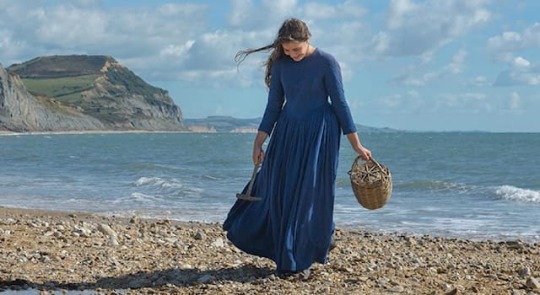
Mary Anning was born on 21st May 1799 in Lyme Regis, Dorset, on the Jurassic Coast of England. During her lifetime, Anning unearthed important finds in marine fossil beds along the coast, changing the way scientists thought about prehistoric life on Earth.
Anning and her brother, Joseph, frequently collected and sold fossils to tourists. At only 12 years old, Anning uncovered the skeleton of an ichthyosaur ("fish lizard"), an extinct reptile that many mistook for a monster. Most people in England at the time believed in the Biblical creation, which when taken literally, implied the Earth was only a few thousand years old. Claiming that Anning had found a skeleton that could potentially be 200 million years old, went against many people’s beliefs.
Over the following years, Anning made many more discoveries on the beaches near her home in Lyme Regis. In 1823, she found a complete skeleton of a plesiosaurus, and in 1828, the fossil of a ray-finned fish and the partial skeleton of a pterosaur. The bones and fossil dated back an estimated 66 million to 252 million years.
Anning’s career as a fossil collector was hindered by breast cancer. When the Geological Society learnt about her diagnosis in 1846, they raised money to help her cover the expenses of her medical treatment. Unfortunately, she passed away on 9th March 1847 at the age of 47.
2 notes
·
View notes
Text
Vancleavea campi

By Tas Dixon
Etymology: Named after Phillip Van Cleave
First Described By: Long & Murry, 1995
Classification: Biota, Archaea, Proteoarchaeota, Asgardarchaeota, Eukaryota, Neokaryota, Scotokaryota, Opimoda, Podiata, Amorphea, Obazoa, Opisthokonta, Holozoa, Filozoa, Choanozoa, Animalia, Eumetazoa, Parahoxozoa, Bilateria, Nephrozoa, Deuterostomia, Chordata, Olfactores, Vertebrata, Craniata, Gnathostomata, Eugnathostomata, Osteichthyes, Sarcopterygii, Rhipidistia, Tetrapodomorpha, Eotetrapodiformes, Elpistostegalia, Stegocephalia, Tetrapoda, Reptiliomorpha, Amniota, Sauropsida, Eureptilia, Romeriida, Diapsida, Neodiapsida, Sauria, Archosauromorpha, Crocopoda, Archosauriformes, Eucrocopoda, Proterochampsia?, Doswelliidae?
Status: Extinct
Time and Place: 228 to 203.6 million years ago, in the Norian of the Late Triassic

Vancleavea is best known from the Petrified Forest in Arizona and Ghost Ranch in New Mexico, but is found throughout the Chinle Formation in Arizona, New Mexico, Texas and Utah in the southern United States. It is also known from the Tecovas Formation in Texas, and the Redonda and Bull Canyon Formations in New Mexico.

Physical Description: Vancleavea is a peculiar reptile, even by Triassic archosauromorph standards. It effectively resembles an armoured, scaly eel with tiny legs, a long neck, the tail of a crocodile and a frighteningly fang-toothed skull. The largest complete specimen is approximately 1.2 metres (3.9 feet) long, although isolated pieces from other specimens indicate it could grow larger. Most of its body is covered in an array of overlapping bony osteoderms that come in 5 different shapes on the main body, throat, underbelly, limbs and tail (as well as possibly some strange spike-like osteoderms of unknown position). Uniquely, the osteoderms on the tail are tall and flat from side to side, forming a tall fin along the top of the tail for swimming. No other tetrapod—except for the closely related Litorosuchus—has a tail fin like this (usually they are made of tall neural spines from the tail bones).
Vancleavea’s skull is also unusual, as it is very robust and solid, despite the relatively thin and pointed snout. The back of the skull is boxy and has completely closed over the upper temporal fenestra, leaving just the very large lower temporal fenestra. The antorbital fenestra in front of the eyes, a typical feature of archosauriform reptiles, has also been lost, and the snout is short with nostrils that point directly upwards. The jaw bones of Vancleavea are heavily pitted and have a rough texture, which combined with the large teeth imply Vancleavea lacked lips and had exposed fangs, similar to crocodiles. Vancleavea had three fangs on each side of its jaws, one at the front, one on the lower jaw, and another on the upper jaw behind the bottom fang. The dentary fang slotted into a gap in the upper jaw when the mouth was closed, again similar to crocodiles.
The body of Vancleavea is long and tubular, enhanced by both the unusually long neck and the small size of its limbs. It’s unlikely Vancleavea’s limbs were strong enough to lift its body off the ground on land, and in fact the forelimb is so reduced that the shape of some its finger bones suggests it had even lost the claws on its hands. All in all Vancleavea is very clearly built to be semi-, if not almost entirely, aquatic, swimming with a sinuous, eel-like motion and rarely crawling onto land, perhaps only to lay its eggs.
Diet: The massive, serrated fangs and conical teeth indicate Vancleavea was carnivorous, likely feeding on fish and other aquatic prey, such as small temnospondyl amphibians.
Behavior: Vancleavea is almost certainly semi-aquatic, using its deep, finned tail to scull through the water similar to living crocodilians. It’s speculated that Vancleavea lived as an ambush predator, lunging forward to snag prey in its fangs. It lived in slow-moving freshwater environments, and its elongated, sinuous body would have been perfect for winding through plants and logs and other obstacles in the water.
Ecosystem: Vancleavea is known from much of the Chinle Formation, one of the most well known Late Triassic formations in the world, and its longevity means that it coexisted with a wide variety of other animals. There were of course the dinosaurs, including the likes of Coelophysis, Chindesaurus and Daemonosaurus, along with other dinosauriforms such as silesaurids and the lagerpetid Dromomeron, as well as early pterosaurs. Pseudosuchian archosaurs were incredibly abundant, such as the numerous herbivorous aetosaurs and Revueltosaurus, the dinosaur-like poposauroids including the herbivorous beaked Shuvosaurus and Effigia, as well as the predatory Poposaurus. Rauisuchid pseudosuchians were among the top predators, such as Postosuchus, while small long-legged crocodylomorphs like Hesperosuchus and Parrishia chased after smaller prey. Various other archosauromorphs were present too, including the bizarre drepanosaurs, herbivorous allokotosaurs such as Trilophosaurus and an unnamed azendohsaurid, and the strange armoured Doswellia, possibly Vancleavea’s closest relative. There was even an early turtle, Chinlechelys, one of the earliest known to have a fully formed shell, and a relative of the tuatara, Whitakersaurus. The only definitively known synapsid from the Chinle is the large herbivorous dicynodont Placerias.
In the water, Vancleavea would have coexisted with numerous species of giant phytosaurs—crocodile-like reptiles that may-or-may-not be pseudosuchians—such as Leptosuchus and Machaeoprosopus, as well as the predatory temnospondyl amphibian Anaschisma (formerly known as Koskinonodon). Vancleavea’s heavy armour may have been necessary protection against these predators, which could have had jaws almost as long as it was! Fish were abundant in the freshwater ecosystem, with various ray-finned fish such as the pike-like Saurichthys, the large lungfish Arganodus, freshwater sharks such as Xenacanthus, and even a freshwater coelacanth, Chinlea. Many of these fish grew to as large or larger than Vancleavea, and may have competed with it or even preyed upon it (at least as juveniles).
Vancleavea also coexisted with several other, more mysterious reptiles that are mostly only known from teeth. One of these, Acallosuchus, was discovered close by to the original specimen of Vancleavea. The skull and skeleton were originally suggested to belong to the same animal, but we now know Vancleavea had a very different skull to Acallosuchus. Supposedly its skull was long, pointed and triangular, with a knobbly texture on the bones. I say “supposedly” because the skull disintegrated while it was excavated, and all that’s left is a crude drawing and a few pieces of bone. The identity of Acallosuchus remains a mystery. Other mysterious species that Vancleavea coexisted with are the former ornithischians Tecovasaurus and Crosbysaurus, Colognathus, Palacrodon, the possibly venomous Uatchitodon, and the extremely enigmatic Kraterokheirodon known only from two teeth so unlike any known tetrapod alive or extinct it can only be classified as Amniota incertae sedis! Vancleavea was once in the same boat as all these creatures, known only by pieces of the skeleton and its armour, and with any luck, Acallosuchus and the other mystery creatures will end up like Vancleavea and turn up some complete skeletons one day.
Other: Vancleavea is known from throughout the Chinle Formation and several other localities in the southern US, however, most of these specimens consist of isolated bones and osteoderms. The Chinle Formation covers many tens of millions of years from top to bottom, and it’s unlikely the single species V. campi was that long-lived (its range spans a whole 20 million years!). Variations between some specimens suggest that there may be more diversity within Vancleavea then we currently recognise. However, until better specimens are found and can be compared, we can’t be sure how Vancleavea evolved and changed throughout the course of the Chinle.
Vancleavea has a fairly complicated history, the holotype was first discovered in the Petrified Forest by fossil collector Phillip Van Cleave, who lent it his name, but it wasn’t described and named until 1995 and still only consisted of a fragmentary skeleton. Nearly complete specimens from Ghost Ranch were discovered in 1982, but they wouldn’t be recognised as Vancleavea until decades later. In 2008, new specimens from the Petrified Forest were published, but Vancleavea still had to wait another year before the Ghost Ranch specimens were extensively described and its strangeness could be fully appreciated.
Until recently, Vancleavea was the only known stem-archosaur of its kind known in the world, and its relationship to other archosauriforms was enigmatic. However, the discovery of the closely related Litorosuchus from China indicates that the Vancleavea-family (“vancleaveans”) was indeed more diverse and widespread. Unlike Vancleavea, Litorosuchus was marine, and had a much longer, almost spinosaur-like snout. The position of Vancleavea in the archosauromorph tree is still uncertain, but it has been suggested to be a type of proterochampsian, a group of typically crocodile-like reptiles closely related to archosaurs proper. Particularly, it has been allied to the family Doswelliidae, a peculiar family of proterochampsians with similarly strange armour and skeletons. Regardless of where it truly belongs, Vancleavea is at least generally agreed to be a fairly derived archosauriform, quite close to the crown group of Archosauria, albeit having evolved down a very unusual, unique route all of its own.
~ By Scott Reid
Sources under the cut
Hunt, Adrian P.; Lucas, Spencer G.; Spielmann, Justin A. (January 2005). "The holotype specimen of Vancleavea campi from Petrified Forest National Park, Arizona, with notes on the taxonomy and distribution of the taxon". New Mexico Museum of Natural History and Science Bulletin. 29: 59–65.
Li, C.; Wu, X.-C.; Zhao, L.-J.; Nesbitt, S.J.; Stocker, M.R.; Wang, L.-T. (2016). "A new armored archosauriform (Diapsida: Archosauromorpha) from the marine Middle Triassic of China, with implications for the diverse life styles of archosauriforms prior to the diversification of Archosauria". The Science of Nature. 103 (95): 95.
Long, R. A. & Murry, P. A. (1995). "Late Triassic (Carnian and Norian) tetrapods from the southwestern United States". New Mexico Museum of Natural History and Science Bulletin. 4: 1–254.
Miller, Zachery (November 17 20016). D&D Monsters of the Triassic. Waxing Paleontologist.
Nesbitt, S. J.; Stocker, M. R.; Small, B. J.; & A. Downs (November 26, 2009). "The osteology and relationships of Vancleavea campi (Reptilia: Archosauriformes)". Zoological Journal of the Linnean Society. 157 (4): 814–864.
Parker, W. G.; Barton, B. (2008). "New information on the Upper Triassic archosauriform Vancleavea campi based on new material from the Chinle Formation of Arizona". Palaeontologia Electronica. 11 (3)
#vancleavea#archosauromorph#diapsid#reptile#triassic#triassic madness#triassic march madness#prehistoric life#paleontology
287 notes
·
View notes
Text
Ireland's only 2 dinosaur bones have just been confirmed for the first time
https://sciencespies.com/environment/irelands-only-2-dinosaur-bones-have-just-been-confirmed-for-the-first-time/
Ireland's only 2 dinosaur bones have just been confirmed for the first time
Once upon a time, dinosaurs were a pretty ubiquitous lot. Even 66 million years after the last dinosaurs went extinct, the fossils they left behind have been found on every continent on Earth.
But bones don’t just fossilise anywhere – they’re most often found in sedimentary rocks. One particular area where there’s a distinct lack of dinosaur remains is Ireland.
Sedimentary rocks from the time of the dinosaurs in Ireland have been moved about, buried, or undergone erosion. These Mesozoic Era rocks were torn from the supercontinent of Pangea and shifted north before being buried under basalt from intense volcanic activity after the time of the dinosaurs, so that they now make up only about 1 percent of Ireland’s rocks.
“Most of Ireland’s rocks are the wrong age for dinosaurs, either too old or too young, making it nearly impossible to confirm dinosaurs existed on these shores,” explains National Museums Northern Ireland curator and palaeontologist Mike Simms.
But it’s not entirely void of dinosaur fossils. The late Roger Byrne, a school teacher and fossil collector, has an incredible legacy – he found not one but both of Ireland’s only dinosaur fossils.
And those fossils – found in the 1980s and donated to the Ulster Museum among several other fossils – have just been described for the first time in a scientific paper.
“Finding an Irish dinosaur might seem a hopeless task but, nonetheless, several potential candidates have been identified and are described for the first time here,” the researchers write in their new paper.
“Several specimens from Northern Ireland have been suspected, or suggested, as dinosaur bones but just two can be definitely assigned to this group on the basis of their bone histology, surface texture and morphology.”
youtube
The paper looks into four specimens that could have been dinosaur fossils, three that Byrne found on the beach near the Gobbins on the Eastern coast of Northern Ireland between 1980 and 2000, and one that’s been in the museum collection since 1920, but its history is a little hazy.
That 1920s specimen is a fossil, but not of a dinosaur. Instead, the team believes it’s likely a marine reptile like an ichthyosaur.
Byrne’s 2000 discovery, on the other hand, was a weird pentagonal shape with a bone-like texture and seemed to be unlike any dinosaur discovered so far.
“It was only through examination by a fresh pair of eyes in 2019 that the mystery was finally solved,” the researchers write.
“It is not a bone at all but merely a small pentagonal piece of basalt!”
And that left two of Byrne’s fossil finds – one femur fragment of a four-legged herbivore called Scelidosaurus, and one tibia fragment of a two-legged carnivore part of the neotheropod clade.
“Analysing the shape and internal structure of the bones, we realised that they belonged to two very different animals,” says the University of Portsmouth palaeontologist Robert Smyth.
“One is very dense and robust, typical of an armoured plant-eater. The other is slender, with thin bone walls and characteristics found only in fast-moving two-legged predatory dinosaurs called theropods.”
Of course, there’s still the question of how they got there in the first place, especially with so little ‘correct’ rock. Ireland was also underwater for a significant chunk of the age of the dinosaurs, so there’s even less land for the creature’s bones to eventually fossilise in.
“The two dinosaur fossils that Roger Byrne found were perhaps swept out to sea, alive or dead, sinking to the Jurassic seabed where they were buried and fossilised,” says Simms.
The rocks from the age of dinosaurs found in Ireland are mostly limestone, chalks, and mudstones, but these were deposited under the sea. The thing about the Gobbins beach though is that there’s a large amount of basalt and limestone on the shore.
If the occasional land dinosaur washed out to sea, it could have been fossilised in these undersea rocks, and then eventually washed back onto the shore hundreds of millions of years later.
“Despite being fragmentary, these fossils provide valuable insight on a very important period in dinosaur evolution, about 200 million years ago. It’s at this time that dinosaurs really start to dominate the world’s terrestrial ecosystems,” says Smyth.
The research has been published in the Proceedings of the Geologists’ Association.
#Environment
1 note
·
View note
Photo

Work in progress underpainting for Coelophysis bauri. A small and somewhat understated creature, Coelophysis was a slim, lightly-built predator that lived during the late Triassic period into the early Jurassic, from about 216 to 196 million years ago.
It measured just 9.8 feet long and weighed in at roughly 33 to 44 pounds. Sporting a classic theropod body form common to the larger predatory dinosaurs that later follow in it's footsteps with animals like Tyrannosaurus rex and Allosaurus fragilis, a body plan that would eventually be carried over all the way to modern birds.
Coelophysis was a swift and agile hunter, possessing a long neck, body, and tail, it's head was narrow and pointed with large front- facing eyes, giving it excellent stereoscopic vision and depth perception which it most likely used to hunt down animals like small reptiles and early mammals.
Originally discovered in northwestern New Mexico in 1881 by fossil collector, David Baldwin on behalf of Edward Drinker Cope during the notorious "Bone Wars," it wasn't officially named until 1887 when Cope classified it as a species of Coelurus, later renaming it Coelophysis (meaning "hollow form") in 1889 as it was found to be a new genus outside of the Ceolurus grouping.
In 1947 Edwin Colbert and George Whitaker discovered a massive cache of Coelophysis bauri specimens on the sight of the aptly named Ghost Ranch in north-central New Mexico, hitting the proverbial "jackpot" when it comes to paleontological finds. This mass grave holds the remains of what has been estimated to be nearly a thousand individuals, including adults, sub-adults, and juveniles. With so many specimens of one species, scientists are able to learn a lot about the biology of this animal, including diet, social behaviors, and sexual dimorphism.
While it may not be the biggest, have impressive armor, weird horns, a wicket crest, or giant claws, Coelophysis was an important step in the evolution of dinosaurs and birds, and an important source of knowledge for science to learn about the world they lived in.
#workinprogress#wip#coelophysis#dinosaur#theropod#triassic#jurassic#paleo#paleontology#paleoart#sciart#educational#naturalhistory#extinction#extinctanimals#digitalart#digitalillustration#illustration#art#painting#drawing#maine#maineart#newengland#artistsontumblr
24 notes
·
View notes
Text
Thursday 28th January 2021
Fossils. Ammonite and a woman named Mary Anning

Firstly a reminder that it’s a big day tomorrow and all weekend what with the Big Garden Birdwatch running and the film ‘The Dig’ being released on Netflix. I wrote about the film Here and the BTO’s Big Garden Birdwatch too.
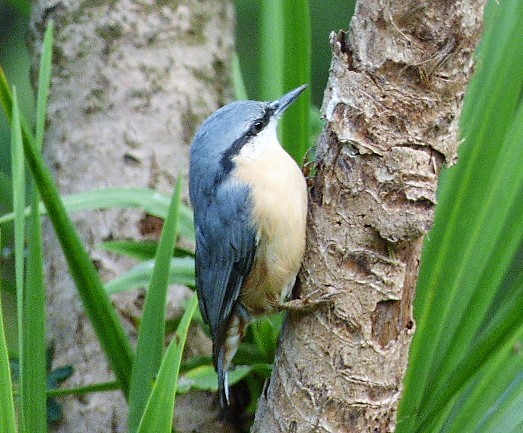
Nuthatch in our garden
So that’s the reminders done.
Last night on BBC’s Winterwatch they were talking about the Isle of Skye and Dinosaur hunting - evidence of not real life Jurassic Park and last Autumn there was another film about a 19th Century historical, little known, woman who make a huge difference to the study of the natural world. I read about her in a BBC article.
Kate Winslet starred, but I haven’t really heard much about it. Apparently it wasn’t styled as a biopic and contained a largely fictional account of Mary’s romantic inclinations, despite her impact being to change our understanding of life in prehistoric times
"Mary Anning was three things you didn't want to be in 19th-century Britain - she was female, working class and poor" says Anya Pearson, who is campaigning for a statue in her honour.
"This was a time when even educated women weren't allowed to own property or vote, but despite this horrendous upbringing she was able to do all these incredible things."
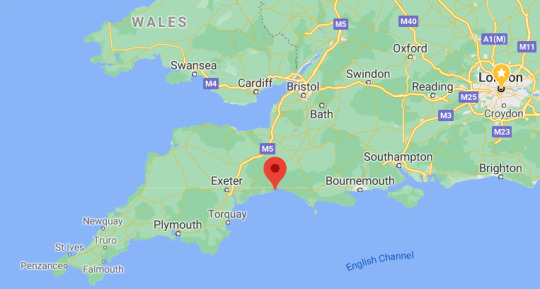
Lyme Regis: location shown by the red pin in the map
Lyme Regis, Dorset, in the south west of England, where Mary lived, was submerged 200 million years ago. This is why there are so many pre-historic fossils from underwater creatures found there. Mary often went fossil hunting after a storm because this usually caused bits of cliff to fall and for rocks to break open which made the fossil hunting easier. On the flip side of that it actually meant where the family lived was quite a dangerous location.
We’ve visited, many many years ago and had a lovely break. It’s very picturesque countryside and is also famous for the Meryl Streep film French Lieutenant’s Woman. I’ve walked along the famous Cobb, but not with such dramatic effect.

Original film poster
As you would gather from the ‘poor’ comment, Mary Anning's life was scarred by hardship and tragedy, but also quite incredibly triumphant scientific firsts. Born on 21 May 1799 she had been one of 10 children: eight of her nine siblings died before reaching adulthood.
Her father was a cabinet maker but used to scour the beach for fossils to sell and supplement his income. Mary would go out to help him and this is where he interest grew. She was only 11 when he died of TB after a serious fall. Mary carried on the sales to try and help the family survive. Although she had little formal education she could read and so schooled herself in subjects like geology and anatomy and would even dissect modern animals like fish and cuttlefish so that she could better understand the fossils she was finding.
Only a year after her father's death Mary and her brother discovered a skeleton - now known to be an Ichthyosaur - this was the event for which she’s most remembered today. This complete skeleton was around 17′ long. She regularly risked her life in her hunt for fossils, making discoveries that captured the attention of the scientific elite, even though her social status and gender meant she never received the credit she deserved.
Twelve years later, she found the first complete skeleton of a Plesiosaur, a marine reptile so bizarre that scientists thought it was a fake.
The ‘four flipper swimmer’ who ‘flew’ through the ocean.
youtube
The most fantastic find was a Plesiosaur uncovered in 1987. Its abdomen contained bones of an embryo, which proves the animal gave birth to live young.
We’re still learning.
We’ve also got to remember that at the time Mary’s family were non-conformist, t living in a very religious community. The Creation was the subject of society’s beliefs and the notion of extinction was a relatively new idea to science.
Lyme Regis Museum geologist Paddy Howe, who was a technical adviser for Ammonite (the film) describes Anning as a "very poor child who was making fantastic scientific discoveries".
"At this time, geology and palaeontology were burgeoning sciences - just coming into their own, he says. "We know about Ichthyosaur bones from the 1600s but it was the first one to be studied by scientists. It was very important."
The marine reptile was bought from Anning for £23 and later purchased by the British Museum at auction in 1819. It can still be seen at the Natural History Museum. I imagine the value today is priceless.
Make a Virtual Visit to the Museum
Despite Mary Anning's growing reputation, societal norms meant she would never be accepted into the elite scientific community. In fact, when the Geological Society met to discuss whether the plesiosaur was genuine, she was even not invited along - women were not admitted there until the 20th Century.
"If she was born in 1970, she'd be heading up a palaeontology department at Imperial or Cambridge," says David Tucker, director of Lyme Regis museum.
"But she was a commercial fossil hunter; she had to sell what she found. Therefore, the fossils tended to be credited to museums in the name of the rich man that paid for them, rather than the poor woman who found them.
"This isn't just around gender - the history of science is littered with the neglected contributions of working-class scientists."
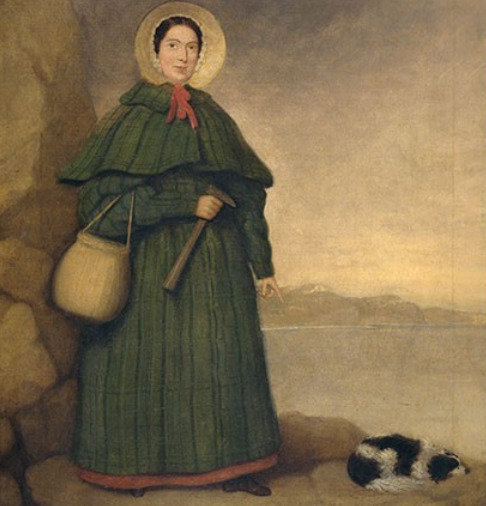
Mary Anning: image credit the Natural History Museum
Despite her lifetime of groundbreaking work, Mary remained in hardship and died of breast cancer in 1847, aged 47. She is buried at St Michael the Archangel Church in Lyme Regis.
Following her death, Henry De la Beche, President of the Geological Society and a friend of hers, broke with the Society's members-only tradition to read a eulogy at a meeting, paying homage to her achievements.
He wrote: "I cannot close this notice of our losses by death without adverting to that of one, who though not placed among even the easier classes of society, but one who had to earn her daily bread by her labour, yet contributed by her talents and untiring researches in no small degree to our knowledge."
Three years later, a stained-glass window in her memory, paid for by members of the Geological Society, was installed in the church where she was buried. Her legacy is also marked at Lyme Regis Museum, where there is a gallery dedicated to Anning's life. In a pleasing coincidence, the museum stands on the site of her birthplace and family home.
"The fact that the museum is on the site of Mary's house was not in any way planned," Mr Tucker says. "Her family rented a part of the house which stood where we are, right on the edge of the sea.
"They were living in a house that was on the way down and prone to being hit by the huge waves and it was eventually destroyed by a storm."
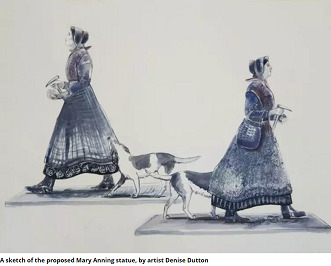
The design includes Mary’s beloved dog, Tray
More than 170 years after her death, Mary Anning's story is now taught in schools, and a campaign, supported by Sir David Attenborough and Prof Alice Roberts, is under way to erect a statue in her honour.
Evie Swire an 11 year old local schoolgirl, began campaigning for the statue, claiming there were more statues in the UK of men called John than there were of all women.
"She's done all these amazing things and sadly has been lost in history," Evie says.
"There have been a lot of forgotten women in history but all of them were educated and came from a wealthy background, but she was poor and working class," says Evie's mother and campaign trustee Anya Pearson.
"I get angry when people refer to her as 'just a fossil collector' because she had great men of learning travel across Europe to learn from her.
Two years later and the campaign is beginning to bear fruit, reaching the £70,000 stage target that means the statue can be commissioned.
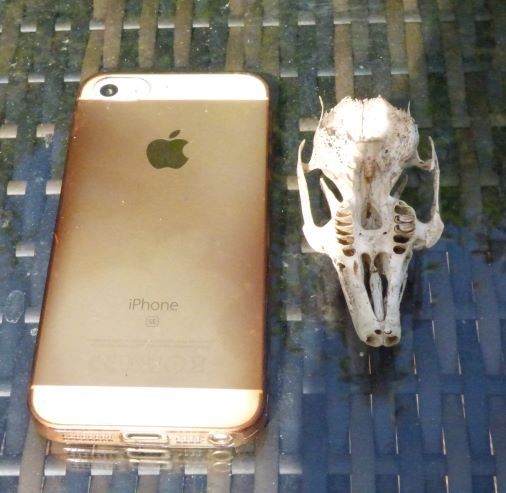
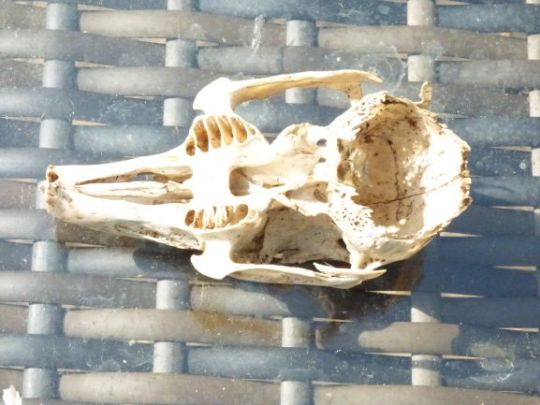
I can’t say I’ve ever had a big interest in dinosaurs or fossils really. It wasn’t something the girls were ever keen on when they were small and so I didn’t get lead down that path like so many parents do these days. The closest I’ve come was finding the rabbit skull in our garden last year - and that’s not going to set the scientific community on fire now is it. Never the less, reading about some women who did have an interest and have worked on important discoveries has whetted my interest and I’ve enjoyed looking at the topics.
NOTES FROM THE KITCHEN:
I found a slightly over-looked roll of ready made puff pastry in the fridge and so with the aid of my trusty lattice roller, I shall be making a leftover-chicken and leek pie.
FUN FACT OF THE DAY:
Mary Anning is said to have been the inspiration for the tongue-twister ‘She sells sea shells by the sea shore’
0 notes
Text
These ancient, swimming reptiles may have been the biggest animals of all time
New Post has been published on https://nexcraft.co/these-ancient-swimming-reptiles-may-have-been-the-biggest-animals-of-all-time/
These ancient, swimming reptiles may have been the biggest animals of all time


In 2016, Paul de la Salle was walking along the beach in the British town of Lilstock when he came across a rock that looked suspiciously bone-like. Specifically, a 205-million-year-old fragment of bone, possibly belonging to the jaw of a long-extinct ichthyosaur.
De la Salle is an amateur fossil hunter, so he knew to call experts Dean Lomax and Judy Massare to confirm the hunch. And it turned out to be quite the find: The three-foot-long piece of jawbone de la Salle eventually assembled from the Lilstock beach may have belonged to a creature as much as 85 feet long. Their research, published this week in PLOS ONE, would put the giant ichthyosaur above even the blue whale, commonly agreed to be the largest animal ever to have lived on Earth.
Ichthyosaur comes from the Greek words for “fish lizard,” but ichthyosaurs were neither fish nor lizards (nor dinosaurs, for that matter). Like modern day whales, they evolved from terrestrial creatures that did an about-face and returned to the sea, from whence all life on Earth once sprang. Unlike whales, the ichthyosaurs’ ancestor was not a mammal but a reptile, and it made its watery homecoming sometime during the early Triassic period, back when whale ancestors were still scurrying around on land laying eggs. But once there, the creatures developed the streamlined body and powerful, paddle-shaped fins of a dolphin, along with the marine predator’s toothy beak. And though they were reptiles and not mammals, ichthyosaurs gave birth to live young and were likely warm-blooded.
Lomax, of the University of Manchester, measured the Lilstock fragment—a bone of the lower jaw called the “surangular”— and quickly understood that this was something special: “I wasn’t entirely sure how big the estimate would turn out to be until I saw the specimen in person,” Lomax says. He and Massare, a professor and marine reptile expert at the State University of New York at Brockport traveled to British Columbia’s Royal Tyrrell Museum of Paleontology to compare the new find to the largest ichthyosaur specimen previously known. The Lilstock surangular was approximately 25 percent larger than the matching bone in the museum specimen. (That behemoth, now dethroned as the largest of the giant ichthyosaurs, is just shy of 70 feet.)
The discovery not only changes our understanding of the ichthyosaur’s range of sizes, but gives a new explanation for unidentified bones uncovered in Gloucestershire in the 1850s. Those fragments were so large that scientists at the time assumed they must belong to dinosaurs; something massive and land-based, like a stegosaurus or a sauropod. But Lomax, along with Massare and de la Salle, posit that these bones are also ichthyosaur jawbones. No one had ever imagined the delicately delphine ichthyosaur could approach the size of the giant beasts that walked the ancient earth, or that these giants persisted for so long—the newest specimen dates to the Late Triassic, meaning giant ichthyosaurs existed until the mass extinction at the end of the Triassic.
England’s limestone cliffs are studded with the petrified history of the ichthyosaur. Long before Paul de la Salle took his long walk on the beach, a pair of young siblings on the other side of England’s jutting southwestern foot found a skull embedded in the crumbling, white cliffs. It was 1810 and the country was in the early stages of what would become full-blown fossil mania. One of those siblings, then 12-year-old Mary Anning, later returned to excavate the rest of the skeleton: a fan of ribs furled around the 60 vertebrae of the spinal column. It would turn out to be the first ichthyosaur specimen ever recovered.
The Annings lived in the town of Lyme Regis, and supplemented a meagre income by selling fossils to collectors and tourists. Anning’s parents and her brother Joseph hunted for bones among the cliffs, but it was Mary who turned it into a career, venturing along the unstable cliffs with her dog, Tray. At a time when women were not often educated—let alone encouraged to become scientists—Mary Anning taught herself geology and paleontology. She often illustrated and classified the specimens she found, though she rarely earned a byline in the scientific journals where male naturalists described her finds.
Anning is perhaps most famous for unearthing the first complete plesiosaur skeleton, a specimen so large it caught the attention of Georges Cuvier, who went on to formulate some of the earliest theories about extinctions. Her discoveries are also thought to have informed Darwin’s thinking on evolution, along with countless other scientists far more famous in their time than Anning. Nevertheless, in 2010, 200 years after she first came eye to eye with the ichthyosaur in Lyme Regis, Mary Anning was named one of the ten “most influential British women in science” by the British Royal Society.
Anning’s ichthyosaur was described by Everard Home in 1814 as an enigma somewhere between lizard and fish, a full 17 feet from nose to tail. Anning’s life, too, was a strange mix, her success and the eventual respect she earned from a handful of British paleontologists countered by lifelong poverty and an early death. Her ambition was outsize to the age she was born into, but her story, exhumed, continues to grow in import. In 2015, more than two centuries after Anning’s ichthyosaur came to light, Lomax and Massare named a newly identified species after the pioneering paleontologist: Ichthyosaurus anningae. And her work continues to inform the inquiries of scientists today. “I’ve spent the past decade tracing her footsteps, examining the many specimens she collected,” Lomax wrote. “She was an incredible woman.”
Written By Amelia Urry
0 notes
Text
The Top 5 Most Impressive Albertosaurus Fossils Ever Discovered
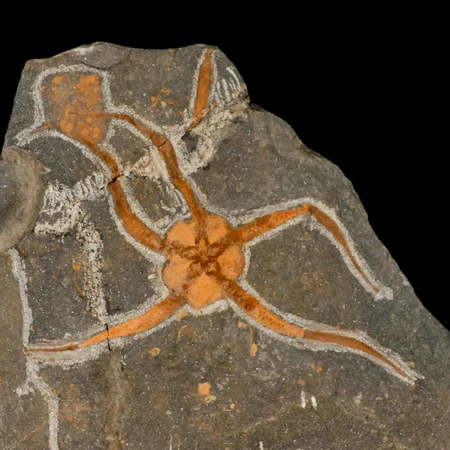
Albertosaurus, a prehistoric beast that lived during the late Cretaceous era, remains a constant source of intrigue to paleontologists and fossil collectors alike for years. Its size and unique features alone are enough to leave any trained fossil hunter speechless before an Albertosaurus specimen. Albertosaurus specimens are rather few compared to those of the fleshier, larger tyrant of dinosaur fossils, starfish fossils; however, a few of the most extraordinary fossils of Albertosaurus were discovered and will continue to amaze the scientific community. Here are five of the neatest Albertosaurus fossils that were dug up.
The 1991 Dinosaur Park Find
Possibly among the greatest finds of Albertosaurus fossils happened in 1991 right in Dinosaur Provincial Park in Alberta, Canada. A skeleton that is nearly 70% complete fossilizes in and out of this predatory dinosaur. Excellent remains have opened up vistas into the anatomy of Albertosaurus, including the configuration of its powerful jaws and agility. It is currently placed as one of the most impressive specimens in the world and is kept in a Canadian museum for further research.
Glen Rose Fossil
It unveiled an extraordinarily well-preserved Albertosaurus tooth and partial jaws. This find is not only helpful in understanding the dental morphology of Albertosaurus, but also points to a carnivore lifestyle. These kinds of fossils are very much in demand among collectors. Prices for Albertosaurus Fossils for Sale are, therefore, very high due to their scientific and aesthetic values.
The Fossil of 2005
The discovery was an important fossil of Albertosaurus found in 2005 in one of Alberta's rich fossil beds. It consisted of a partial skull with features distinctly marking it from any other theropods, and it helped portray the unique structure of Albertosaurus. Sharp teeth and hollow bones brought the suggestion that it had been built for speed and precision. This find is an important one for further separating Albertosaurus from its larger relatives like T-rex.
The Fossil of the Royal Tyrrell Museum
This fossil from Albertosaurus offers a peek into an almost 10-year-old individual not much older than young bighorn sheep. This fossil offers more stages in the developmental life of this species than fossils of adults or later-stage juveniles. These conditions are consistent with possessing a juvenile that died in a floodplain, making this specimen unique and rare in paleontological circles.
The "Starfish" Fossil Find
Not entirely unrelated to that of its namesake, some fossils have more loosely been tied to the ecology in which Albertosaurus would have lived. One of these examples is the rare starfish fossil in the same area where Albertosaurus remains were found: deep proof that ancient marine life thrived in that region. Although such fossils do not hold a direct link to Albertosaurus itself, they do influence the conditions that made its environment possible.
Albertosaurus fossils are a hot item even to collectors. So, if you want to buy Permian fossils for sale or even rare dinosaur remains, such as an Albertosaurus, reputable fossil dealers can be an excellent resource for sweet pieces of history that allow one to appreciate the marvel of prehistoric life. Whether looking for what becomes a starfish fossil to some and a dinosaur-full skeleton to others, the fossil world continues to yield such excellent treasure troves that strengthen our understanding of this planet during the ancient past.
Conclusion
So, here are the top five specimens of Albertosaurus fossils that are famed for their excellent states of preservation and the critical insights they proffer into the life of this extraordinary predator. If you are lucky enough to find Permian reptile fossils for sale
it is like holding a piece of ancient. History in your hands--a history that connects us to the creatures that once ruled the Earth millions of years ago.
For more information, Connect with Fossil Age Minerals.
0 notes
Photo

Polished Fossil Slab – Fish, Shark, Reptile Bone & Coprolite, Aust Cliff UK, Triassic Period
Presenting a rare and scientifically significant Polished Slab of Fossil Fish, Shark Bone, Reptile Bone, and Coprolite from the Westbury Formation, part of the Penarth Group, dated to the Upper Triassic (Rhaetian) approximately 208–201 million years ago. This exceptional piece was sourced from Aust Cliff, near Bristol, United Kingdom, a world-famous Triassic fossil locality.
The slab contains a unique fossil assemblage including:
Fragmented fish bones and scales
Shark and marine reptile bone fragments
Abundant coprolites (fossilised faeces), often spiral or rounded in morphology
All fossil components are preserved within a dark, fine-grained sedimentary matrix and have been expertly polished on one surface to reveal the textures, inclusions, and contrast of this fossil bed.
Fossil Type: Multi-species fossil bed including vertebrate remains and trace fossils (coprolites)
Geological Age: Upper Triassic – Rhaetian Stage
Formation: Westbury Formation
Group: Penarth Group
Depositional Environment: Formed in a coastal lagoonal or shallow marine setting with fluctuating salinity and periodic anoxic events. The Westbury Formation is known for bone beds where marine vertebrates and organic debris accumulated and were rapidly buried in low-oxygen sediments, aiding exceptional preservation.
Morphological Features:
Irregular fragments of fish and reptile bone, embedded in matrix
Rounded and spiral coprolites of varying sizes
Polished surface highlights bone textures and organic inclusions
Notable:
Authentic slab from Aust Cliff, one of the most famous Upper Triassic sites in the UK
Displays diverse fossil content in a single polished surface
Excellent for collectors, museums, academic study, or decorative purposes
The actual specimen shown in the listing photograph
Authenticity: All of our fossils are 100% genuine natural specimens and come with a Certificate of Authenticity. The item photographed is the exact specimen you will receive. Each cube or square in the scale represents 1cm – please refer to the image for full sizing.
This Polished Fossil Slab from Aust Cliff offers a fascinating snapshot of life in the waning years of the Triassic period, preserved within the storied sediments of the Westbury Formation. A rare and beautiful piece for any serious collector or enthusiast.
#Aust Cliff Fossil#Westbury Formation#Coprolite Fossil#Reptile Bone Fossil#Fossil Fish Slab#Triassic Fossil UK#Fossil Shark Bone#Upper Triassic Fossils#Bristol Fossil Bed#Fossil Reptile Slab#Fossil Collector Specimen#Genuine Fossil Slab#UK Fossil#Penarth Group Fossil
0 notes
Photo

Polished Fossil Slab – Fish, Shark, Reptile Bone & Coprolite, Aust Cliff UK, Triassic Period
Presenting a rare and scientifically significant Polished Slab of Fossil Fish, Shark Bone, Reptile Bone, and Coprolite from the Westbury Formation, part of the Penarth Group, dated to the Upper Triassic (Rhaetian) approximately 208–201 million years ago. This exceptional piece was sourced from Aust Cliff, near Bristol, United Kingdom, a world-famous Triassic fossil locality.
The slab contains a unique fossil assemblage including:
Fragmented fish bones and scales
Shark and marine reptile bone fragments
Abundant coprolites (fossilised faeces), often spiral or rounded in morphology
All fossil components are preserved within a dark, fine-grained sedimentary matrix and have been expertly polished on one surface to reveal the textures, inclusions, and contrast of this fossil bed.
Fossil Type: Multi-species fossil bed including vertebrate remains and trace fossils (coprolites)
Geological Age: Upper Triassic – Rhaetian Stage
Formation: Westbury Formation
Group: Penarth Group
Depositional Environment: Formed in a coastal lagoonal or shallow marine setting with fluctuating salinity and periodic anoxic events. The Westbury Formation is known for bone beds where marine vertebrates and organic debris accumulated and were rapidly buried in low-oxygen sediments, aiding exceptional preservation.
Morphological Features:
Irregular fragments of fish and reptile bone, embedded in matrix
Rounded and spiral coprolites of varying sizes
Polished surface highlights bone textures and organic inclusions
Notable:
Authentic slab from Aust Cliff, one of the most famous Upper Triassic sites in the UK
Displays diverse fossil content in a single polished surface
Excellent for collectors, museums, academic study, or decorative purposes
The actual specimen shown in the listing photograph
Authenticity: All of our fossils are 100% genuine natural specimens and come with a Certificate of Authenticity. The item photographed is the exact specimen you will receive. Each cube or square in the scale represents 1cm – please refer to the image for full sizing.
This Polished Fossil Slab from Aust Cliff offers a fascinating snapshot of life in the waning years of the Triassic period, preserved within the storied sediments of the Westbury Formation. A rare and beautiful piece for any serious collector or enthusiast.
#Aust Cliff Fossil#Westbury Formation#Coprolite Fossil#Reptile Bone Fossil#Fossil Fish Slab#Triassic Fossil UK#Fossil Shark Bone#Upper Triassic Fossils#Bristol Fossil Bed#Fossil Reptile Slab#Fossil Collector Specimen#Genuine Fossil Slab#UK Fossil#Penarth Group Fossil
0 notes
Photo

Polished Fossil Slab – Fish, Shark, Reptile Bone & Coprolite, Aust Cliff UK, Triassic Period
Presenting a rare and scientifically significant Polished Slab of Fossil Fish, Shark Bone, Reptile Bone, and Coprolite from the Westbury Formation, part of the Penarth Group, dated to the Upper Triassic (Rhaetian) approximately 208–201 million years ago. This exceptional piece was sourced from Aust Cliff, near Bristol, United Kingdom, a world-famous Triassic fossil locality.
The slab contains a unique fossil assemblage including:
Fragmented fish bones and scales
Shark and marine reptile bone fragments
Abundant coprolites (fossilised faeces), often spiral or rounded in morphology
All fossil components are preserved within a dark, fine-grained sedimentary matrix and have been expertly polished on one surface to reveal the textures, inclusions, and contrast of this fossil bed.
Fossil Type: Multi-species fossil bed including vertebrate remains and trace fossils (coprolites)
Geological Age: Upper Triassic – Rhaetian Stage
Formation: Westbury Formation
Group: Penarth Group
Depositional Environment: Formed in a coastal lagoonal or shallow marine setting with fluctuating salinity and periodic anoxic events. The Westbury Formation is known for bone beds where marine vertebrates and organic debris accumulated and were rapidly buried in low-oxygen sediments, aiding exceptional preservation.
Morphological Features:
Irregular fragments of fish and reptile bone, embedded in matrix
Rounded and spiral coprolites of varying sizes
Polished surface highlights bone textures and organic inclusions
Notable:
Authentic slab from Aust Cliff, one of the most famous Upper Triassic sites in the UK
Displays diverse fossil content in a single polished surface
Excellent for collectors, museums, academic study, or decorative purposes
The actual specimen shown in the listing photograph
Authenticity: All of our fossils are 100% genuine natural specimens and come with a Certificate of Authenticity. The item photographed is the exact specimen you will receive. Each cube or square in the scale represents 1cm – please refer to the image for full sizing.
This Polished Fossil Slab from Aust Cliff offers a fascinating snapshot of life in the waning years of the Triassic period, preserved within the storied sediments of the Westbury Formation. A rare and beautiful piece for any serious collector or enthusiast.
#Aust Cliff Fossil#Westbury Formation#Coprolite Fossil#Reptile Bone Fossil#Fossil Fish Slab#Triassic Fossil UK#Fossil Shark Bone#Upper Triassic Fossils#Bristol Fossil Bed#Fossil Reptile Slab#Fossil Collector Specimen#Genuine Fossil Slab#UK Fossil#Penarth Group Fossil
0 notes
Photo

Polished Fossil Slab – Fish, Shark, Reptile Bone & Coprolite, Aust Cliff UK, Triassic Period
Presenting a rare and scientifically significant Polished Slab of Fossil Fish, Shark Bone, Reptile Bone, and Coprolite from the Westbury Formation, part of the Penarth Group, dated to the Upper Triassic (Rhaetian) approximately 208–201 million years ago. This exceptional piece was sourced from Aust Cliff, near Bristol, United Kingdom, a world-famous Triassic fossil locality.
The slab contains a unique fossil assemblage including:
Fragmented fish bones and scales
Shark and marine reptile bone fragments
Abundant coprolites (fossilised faeces), often spiral or rounded in morphology
All fossil components are preserved within a dark, fine-grained sedimentary matrix and have been expertly polished on one surface to reveal the textures, inclusions, and contrast of this fossil bed.
Fossil Type: Multi-species fossil bed including vertebrate remains and trace fossils (coprolites)
Geological Age: Upper Triassic – Rhaetian Stage
Formation: Westbury Formation
Group: Penarth Group
Depositional Environment: Formed in a coastal lagoonal or shallow marine setting with fluctuating salinity and periodic anoxic events. The Westbury Formation is known for bone beds where marine vertebrates and organic debris accumulated and were rapidly buried in low-oxygen sediments, aiding exceptional preservation.
Morphological Features:
Irregular fragments of fish and reptile bone, embedded in matrix
Rounded and spiral coprolites of varying sizes
Polished surface highlights bone textures and organic inclusions
Notable:
Authentic slab from Aust Cliff, one of the most famous Upper Triassic sites in the UK
Displays diverse fossil content in a single polished surface
Excellent for collectors, museums, academic study, or decorative purposes
The actual specimen shown in the listing photograph
Authenticity: All of our fossils are 100% genuine natural specimens and come with a Certificate of Authenticity. The item photographed is the exact specimen you will receive. Each cube or square in the scale represents 1cm – please refer to the image for full sizing.
This Polished Fossil Slab from Aust Cliff offers a fascinating snapshot of life in the waning years of the Triassic period, preserved within the storied sediments of the Westbury Formation. A rare and beautiful piece for any serious collector or enthusiast.
#Aust Cliff Fossil#Westbury Formation#Coprolite Fossil#Reptile Bone Fossil#Fossil Fish Slab#Triassic Fossil UK#Fossil Shark Bone#Upper Triassic Fossils#Bristol Fossil Bed#Fossil Reptile Slab#Fossil Collector Specimen#Genuine Fossil Slab#UK Fossil#Penarth Group Fossil
0 notes
Photo

Polished Fossil Slab – Fish, Shark, Reptile Bone & Coprolite, Aust Cliff UK, Triassic Period
Presenting a rare and scientifically significant Polished Slab of Fossil Fish, Shark Bone, Reptile Bone, and Coprolite from the Westbury Formation, part of the Penarth Group, dated to the Upper Triassic (Rhaetian) approximately 208–201 million years ago. This exceptional piece was sourced from Aust Cliff, near Bristol, United Kingdom, a world-famous Triassic fossil locality.
The slab contains a unique fossil assemblage including:
Fragmented fish bones and scales
Shark and marine reptile bone fragments
Abundant coprolites (fossilised faeces), often spiral or rounded in morphology
All fossil components are preserved within a dark, fine-grained sedimentary matrix and have been expertly polished on one surface to reveal the textures, inclusions, and contrast of this fossil bed.
Fossil Type: Multi-species fossil bed including vertebrate remains and trace fossils (coprolites)
Geological Age: Upper Triassic – Rhaetian Stage
Formation: Westbury Formation
Group: Penarth Group
Depositional Environment: Formed in a coastal lagoonal or shallow marine setting with fluctuating salinity and periodic anoxic events. The Westbury Formation is known for bone beds where marine vertebrates and organic debris accumulated and were rapidly buried in low-oxygen sediments, aiding exceptional preservation.
Morphological Features:
Irregular fragments of fish and reptile bone, embedded in matrix
Rounded and spiral coprolites of varying sizes
Polished surface highlights bone textures and organic inclusions
Notable:
Authentic slab from Aust Cliff, one of the most famous Upper Triassic sites in the UK
Displays diverse fossil content in a single polished surface
Excellent for collectors, museums, academic study, or decorative purposes
The actual specimen shown in the listing photograph
Authenticity: All of our fossils are 100% genuine natural specimens and come with a Certificate of Authenticity. The item photographed is the exact specimen you will receive. Each cube or square in the scale represents 1cm – please refer to the image for full sizing.
This Polished Fossil Slab from Aust Cliff offers a fascinating snapshot of life in the waning years of the Triassic period, preserved within the storied sediments of the Westbury Formation. A rare and beautiful piece for any serious collector or enthusiast.
#Aust Cliff Fossil#Westbury Formation#Coprolite Fossil#Reptile Bone Fossil#Fossil Fish Slab#Triassic Fossil UK#Fossil Shark Bone#Upper Triassic Fossils#Bristol Fossil Bed#Fossil Reptile Slab#Fossil Collector Specimen#Genuine Fossil Slab#UK Fossil#Penarth Group Fossil
0 notes